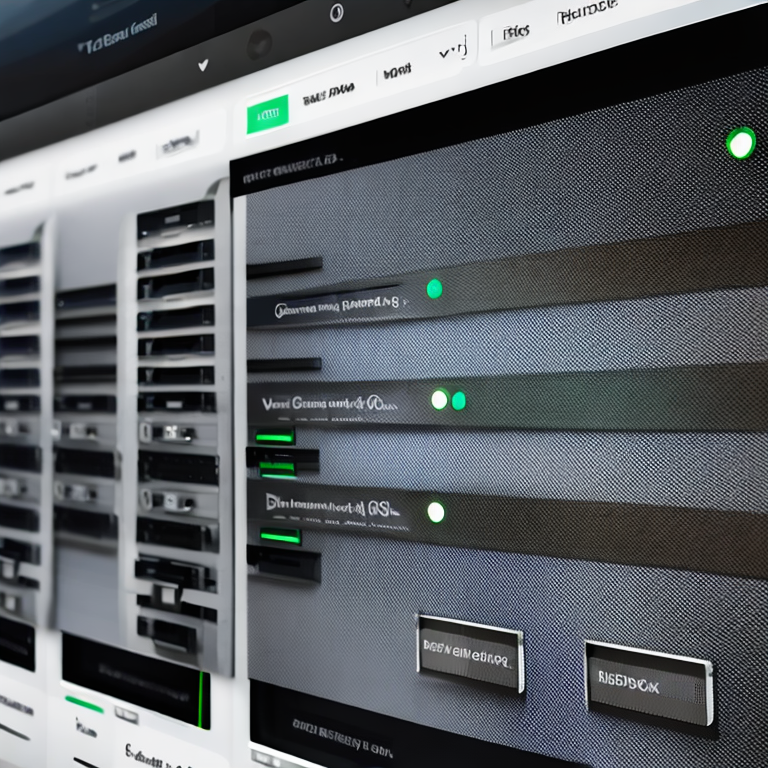Walk Through: How to Set Up a Funnel in Google Tag Manager
Setting up a funnel in Google Tag Manager (GTM) involves several steps, including creating funnel tags, updating triggers, setting up custom metrics in Google Analytics (GA), and finally publishing your changes. Here’s a step-by-step guide tailored to your background as an intermediate-level PHP developer with experience in JavaScript and Python, and someone currently learning Google Analytics and Tag Manager.
Step 1: Create Funnel Tags in GTM
- From Scratch or Pre-Built Container: You can either create these tags from scratch or download a pre-built GTM container that includes all necessary tags. If creating from scratch, ensure all tags are set to “Non-Interaction Hit” to avoid skewing metrics like bounce rate [3].
- Tag Configuration: Each tag should be configured to capture relevant interactions on your website, such as page views, button clicks, or form submissions. The exact configuration will depend on the specifics of your website and the funnel stages you’re tracking.
Step 2: Update Triggers in GTM
- Trigger Matching: Ensure triggers match the URLs and elements on your website accurately. Common Shopify themes and customizations may require adjustments to triggers. Use the worksheet provided with the GTM container for guidance on what needs updating [3].
- Click and Pageview Triggers: For click triggers, identify the unique class or element that fires the desired action. For pageview triggers, adjust the matching URL to reflect the specific pages you’re targeting [3].
Step 3: Create Custom Metrics in GA
- Identify Critical Tags: Determine which tags (funnel events) are crucial for understanding your conversion funnel’s success [3].
- Set Up Custom Metrics: In GA, create up to 20 custom metrics to track these critical events. Then, create calculated metrics using these custom metrics to enhance reporting capabilities [3].
- Integration with GTM: Once custom metrics are set up in GA, return to GTM and update each tag with the corresponding custom metric number. Enable overriding settings in the tag to assign the custom metric index [3].
Step 4: Test Tags in Preview Mode
- Preview Mode: Before publishing, test your tags in GTM’s Preview mode to ensure they fire correctly. This step is crucial for verifying that your setup captures the intended interactions accurately [3].
Step 5: Update GA Variable and Publish GTM Changes
- Update GA Variable: Before data appears in GA, update the GA variable associated with each tag to your Google Analytics property ID. This ensures that the data collected by GTM is correctly attributed to your GA property [3].
- Publish Changes: After testing and confirming everything works as expected, publish your changes in GTM. It may take a few days for data to populate in GA, allowing you to start analyzing your funnel performance [3].
Additional Considerations
- Third-Party Checkouts: If you use a third-party checkout system, consider how this affects your funnel setup. You may need to adjust triggers or tags to accommodate the checkout process [3].
- Visualization and Analysis: Utilize GA’s Goal Funnel Visualization and Custom Reports features to analyze your funnel’s performance. Look for bottlenecks or areas for improvement to optimize conversions [3].
By following these steps and considering the additional points, you’ll be able to set up a comprehensive funnel in Google Tag Manager, providing valuable insights into your website’s conversion process.
Further reading ...
- https://www.youtube.com/watch?v=T34pY84YR8c
- https://www.youtube.com/watch?v=cVzttOyWU58
- https://www.getelevar.com/ecommerce/ecommerce-conversion-funnel-for-shopify/
- https://www.youtube.com/watch?v=PwrYs-FLToY
- https://intercom.help/perspective-funnels/en/articles/3395846-how-do-i-connect-my-funnel-with-google-tag-manager
- https://www.youtube.com/watch?v=AHhInxcWR7s
- https://spiderworking.com/blog/2023/09/27/how-to-set-up-goal-funnels-in-google-analytics-4-ga4/
- https://www.youtube.com/watch?v=lgc-pMcb1yk
- https://www.analyticsmania.com/post/funnel-analysis-report-in-google-analytics-4/ [10] https://www.shorthillsdesign.com/google-analytics/google-analytics-4-how-to-add-steps-to-your-funnel/
How to Determine Which Events are Most Important to Track in a Funnel
Determining which events are most important to track in your funnel involves a systematic approach that focuses on understanding the customer journey and identifying key touchpoints that are critical to achieving your conversion goals. Here’s a structured way to identify and prioritize these events:
Define Your Funnel Objectives
Start by clearly articulating the objectives of your conversion funnel. Whether your goal is lead generation, sales, or another type of conversion, having a clear objective will guide your decision-making process regarding which events to track.
Map the Customer Journey
Chart the course from the first interaction a potential customer has with your brand to the ultimate conversion. This involves identifying all the stages or touchpoints that a user goes through on their journey towards becoming a customer. These stages could include awareness, consideration, and decision phases.
Identify Key Events
Within each stage of the customer journey, identify the key events or actions that are critical to moving forward. For example, a key event might be a user clicking on a call-to-action button, filling out a contact form, or adding a product to their cart. These events are where you’ll focus your tracking efforts.
Prioritize Based on Impact
Not all events are equally important. Some events may significantly impact your conversion rate, while others may be less impactful. Prioritize the events based on their potential impact on achieving your funnel objectives. Consider factors such as the likelihood of an event leading to conversion and the value of the conversion.
Set Up Conversion Events
Once you’ve identified the key events, set up conversion events in your analytics tool (e.g., Google Analytics, Userpilot). This involves tagging and naming each event so that you can systematically track interactions across the customer journey. Clear and consistent naming conventions will enable easier monitoring and analysis of user behavior.
Regularly Analyze and Iterate
After setting up your event tracking, regularly analyze the data to identify drop-offs and friction points in the customer journey. Use these insights to iterate and improve your funnel. Continuous analysis and optimization are key to enhancing the efficiency of your funnel and boosting conversions.
Tools and Tips
- Analytics Tools: Choose an analytics tool that supports detailed event tracking and funnel analysis. Tools like Google Analytics, Userpilot, and Landingi offer robust features for tracking user behavior and identifying conversion opportunities.
- Feature Heatmaps and Session Recordings: Incorporate feature heatmaps and session recordings to gain deeper insights into user interactions and identify friction points in the user experience.
- Custom Events: Utilize custom events to track specific actions that are important to your conversion goals. This allows for more granular analysis and targeted optimization efforts.
By following these steps and leveraging the right tools, you can effectively determine which events are most important to track in your funnel, ultimately driving improvements in conversion rates and user experience.
Further reading ...
- https://userpilot.com/blog/funnel-tracking/#:~:text=Determine%20your%20funnel%20events&text=Begin%20by%20mapping%20the%20customer,critical%20to%20achieving%20your%20goal.
- https://www.fullstory.com/conversion-funnels/
- https://userpilot.com/blog/conversion-funnel-analysis/
- https://segment.com/recipes/optimize-your-funnel-for-conversion/
- https://landingi.com/conversion-optimization/conversion-funnel-analysis/
- https://improvado.io/blog/conversion-funnel
- https://amplitude.com/blog/funnel-analysis
- https://cxl.com/blog/funnel-analysis/
- https://www.cometly.com/post/conversion-funnel-analytics [10] https://getwpfunnels.com/sales-funnel-tracking/
How To Determine Which Events to Track in the First Place?
Determining which events to track in the first place for your funnel involves a strategic approach that starts with defining your funnel objectives and mapping the customer journey. Here’s a step-by-step guide based on the provided sources:
Define Your Funnel Objectives
- Articulate Goals: Clearly state the objectives of your conversion funnel, such as lead generation or sales. Having a clear goal helps in deciding which events are most relevant to achieving that goal [1].
Map the Customer Journey
- Chart the Course: Begin by mapping the customer journey from the first interaction a potential customer has with your brand to the ultimate conversion. Understanding the path users take through your funnel is crucial for identifying key events [1].
Identify Key Events
- Critical Touchpoints: Within the mapped customer journey, identify the key events or touchpoints that are critical to achieving your goal. These are the moments when users interact with your site or app in ways that bring them closer to conversion. Examples include page visits, form submissions, or product add-to-cart actions [1].
Set Up Conversion Funnel Steps
- Select Data Points: Decide on the specific data points (events and their properties) you want to analyze. Also, determine the filters to apply to your reports. Defining conversion criteria, such as counting unique users or specifying the order of conversions, helps tailor the funnel to accurately represent the user journey [1].
Use Events to Collect Data
- Tagging and Naming: By tagging and naming each identified event, you can systematically track interactions across the customer journey. Clear and consistent naming conventions allow for easy monitoring and analysis of user behavior, providing valuable insights into their preferences and helping to optimize the funnel [1].
Track Macro and Micro Conversion Events
- Different Stages Require Different Events: Recognize that different stages of the funnel may require different types of conversion events, depending on your target audience’s level of engagement. Tracking both macro (larger, overarching conversions like purchases) and micro (smaller, incremental actions like adding items to a cart) conversion events can offer a more comprehensive view of the customer journey [3].
Analyze Drop-offs and Friction Points
- Identify Areas for Improvement: After tracking customer interactions, analyze where users drop off to find friction points in the customer journey. These points indicate areas where improvements can be made to enhance the user experience and increase conversions [3].
Tools and Techniques
- Feature Heatmaps and Session Recordings: Utilize feature heatmaps and session recordings to gain deeper insights into user interactions and identify friction points in the user experience. These tools can complement event tracking by providing visual data on how users navigate and interact with your site or app [3].
By following these steps and utilizing the right tools, you can effectively determine which events to track in your funnel, ensuring that your tracking efforts are focused and aligned with your business objectives.
Further reading ...
- https://userpilot.com/blog/funnel-tracking/#:~:text=Determine%20your%20funnel%20events&text=Begin%20by%20mapping%20the%20customer,critical%20to%20achieving%20your%20goal.
- https://segment.com/recipes/optimize-your-funnel-for-conversion/
- https://userpilot.com/blog/conversion-funnel-analysis/
- https://improvado.io/blog/conversion-funnel
- https://www.fullstory.com/conversion-funnels/
- https://www.bizzabo.com/blog/how-to-optimize-your-marketing-funnel-with-events
- https://landingi.com/conversion-optimization/conversion-funnel-analysis/
- https://cxl.com/blog/funnel-analysis/ [9] https://help.amplitude.com/hc/en-us/articles/360039976551-Identify-conversion-drivers-in-your-funnel-analyses
Avoid Common Mistakes When Choosing Events
Common mistakes businesses make when trying to identify and prioritize events for tracking in their funnels often revolve around the complexity of managing large volumes of data, the accuracy of event tracking, and the strategic alignment of tracked events with business goals. Here are some key pitfalls to avoid:
Overcomplicating the Process
- Too Many Event Types: Focusing on tracking every conceivable event can overwhelm your analytics team and make it difficult to derive meaningful insights from the data. It’s crucial to maintain a balance between collecting enough data to support decision-making and avoiding unnecessary complexity. Prioritizing events that align closely with your business objectives and funnel stages is essential [1].
Neglecting Quality Assurance
- Lack of Regular Reviews and QA: Without regular audits and quality assurance checks, event tracking setups can degrade over time, leading to inaccurate or incomplete data. Changes in website design, new features, or A/B tests can alter the landscape of your funnel, necessitating updates to your tracking setup. Assigning a dedicated resource for analytics collection and conducting periodic reviews can help mitigate these issues [1].
Ignoring Technical Errors
- Misfiring Events: Incorrectly configured events can lead to inaccurate data, undermining the reliability of your analytics. Ensuring that events are firing correctly requires ongoing vigilance, especially after significant changes to your website or product. Using tools like Google Tag Manager and conducting thorough testing in a staging environment can help catch and resolve issues early [1].
Underestimating the Importance of Data Utility
- Prioritizing Quantity Over Quality: While having access to vast amounts of data can seem beneficial, it can also dilute the signal among the noise, making it harder to draw actionable insights. Focus on collecting data that provides direct value to your business goals and simplifies decision-making processes. This approach helps in maintaining a manageable analytics ecosystem and ensures that resources are allocated efficiently [1].
Relying Solely on Internal Insights
- Failing to Leverage External Perspectives: Bringing in external consultants periodically can provide fresh insights and help identify areas for improvement that internal teams might overlook. External expertise can also help streamline your analytics setup and ensure that it remains aligned with evolving business needs and market trends [1].
To address these common mistakes, businesses should adopt a strategic approach to event tracking that balances utility, simplicity, and accuracy. Regular audits, quality assurance processes, and leveraging external expertise can help maintain the integrity of your data and ensure that your tracking efforts support your business objectives effectively.
Further reading ...
- https://www.woopra.com/blog/event-tracking-mistakes
- https://www.glassbox.com/blog/funnel-analysis/
- https://www.linkedin.com/advice/0/what-most-common-sales-funnel-mistakes-you-make
- https://salespanel.io/blog/marketing/user-funnels-drop-offs/
- https://metranomic.com/marketing-funnels/5-biggest-marketing-funnel-conversion-mistakes-and-how-to-avoid-them
- https://fastercapital.com/content/Conversion-Funnel-Best-Practices–How-to-Follow-the-Conversion-Funnel-Best-Practices-and-Avoid-Common-Mistakes.html
- https://socio.events/blog/marketing-funnel-event-marketing-strategy
- https://www.glassbox.com/blog/conversion-funnel-optimization/
- https://dripify.io/top-7-mistakes-90-of-marketers-make-with-sales-funnel/ [10] https://isaless.com/major-sales-funnel-challenges/








